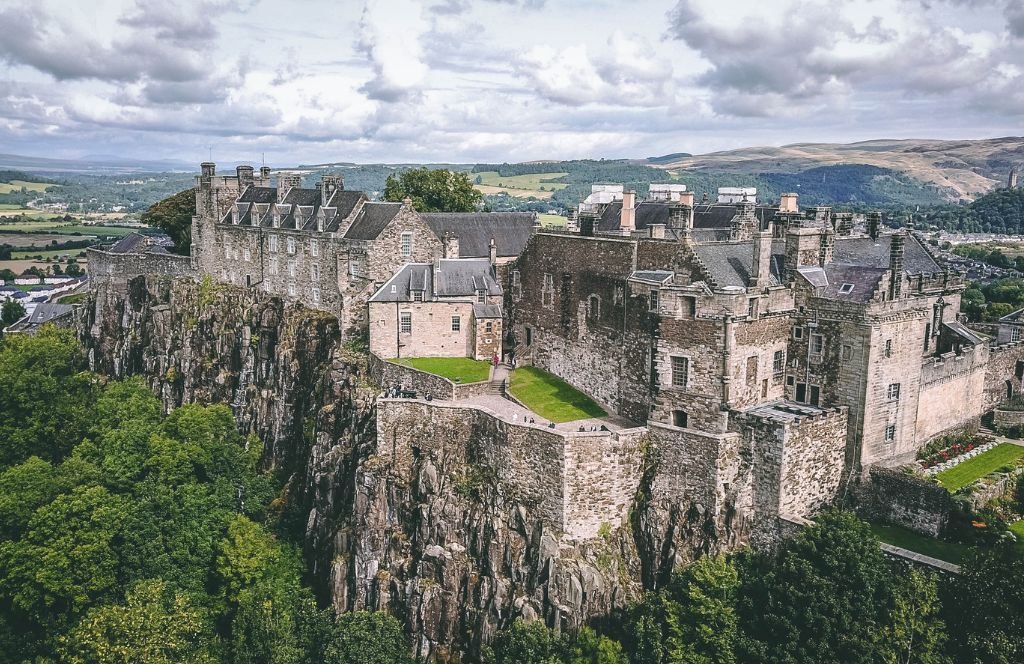The United Kingdom is a country with rich history and culture, where the past and present blend in perfect harmony. From the ancient stones of Stonehenge to the opulent halls of Buckingham Palace, the UK offers a wealth of historical sites that speak to centuries of monarchies, revolutions, scientific advancements, and cultural evolution. From history enthusiasts to casual tourists, the UK is a country full of sites that will simply take you back in time. This article is a tour through some iconic historical sites in the UK and explores what they say about British culture.
1. Stonehenge, Wiltshire
Stonehenge is one of the most famous prehistoric monuments in the world, lying at the heart of the English countryside. This megalithic structure is mysterious, with its very origins still a subject of intense speculation. It is believed to have been constructed between 3000 BC and 2000 BC, although its exact purpose remains unknown.
Some theorists suggest it was a temple for astronomical observations, while others believe it was a burial site or a place of religious worship.
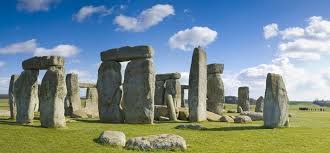
The construction of the site is in the form of large stone blocks arranged in a circular manner, with some weighing as much as 25 tons. These huge stones were transported from as far away as 200 miles, something that has remained a mystery to both historians and archaeologists. Visitors can explore the site and learn about its history through informative exhibits, while the surrounding landscape offers breathtaking views of the Wiltshire countryside.
Stonehenge holds a particular place in British culture because it represents the most ancient relationship with the land and the mysterious past that shaped it. The place is still shrouded in mystery and attracts millions of visitors each year, making it a focal point for anyone interested in more knowledge about British history.
2. London, The Tower of London
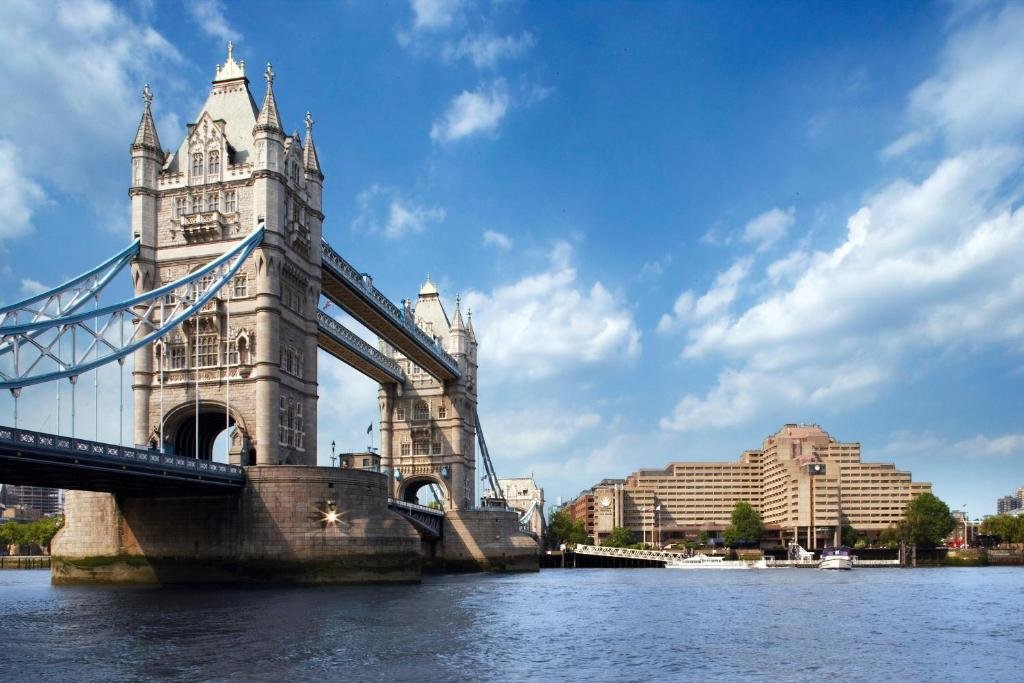
The Tower of London is among the most historical landmarks in London. It was built by William the Conqueror in 1066 and served as a royal palace, prison, treasury, and fortress over the centuries. It may be most famous for housing the Crown Jewels, which include some of the world’s most valuable diamonds, such as the Koh-i-Noor and the Imperial State Crown.
Less savagely perhaps, the Tower has also come to be associated with the darker hues of British history: it is here that so many famous figures have been incarcerated—from Anne Boleyn, Henry VIII’s ill-fated second wife, to Lady Jane Grey, the nine-day queen.
It is one of the towers bearing this name with bloody fame due to the underlining mystery of the disappearance in the 15th century of Edward V and Richard of Shrewsbury, also called the Princes in the Tower. This place provides one of the finest guided tours, full of interactive historic presentations, which really puts one right into the feelings of kings, queens, and prisoners who used to live back in time.
Not only does the Tower of London serve as evidence of royal power, but it is also evidence of those darker chapters in British history, and they see it as an indispensable part of any historical trip to the United Kingdom.
3. Hadrian’s Wall, Northern England

It is one of the most important remains of Roman Britain and a UNESCO World Heritage Site. The wall runs across Northern England from the Irish Sea to the North Sea and was constructed by the Romans in the 2nd century AD under the orders of Emperor Hadrian to protect the northern frontier of the Roman Empire from the tribes of Scotland.
It is a huge structure, stretching 73 miles with the remains of forts, milecastles, and watchtowers along it. The structure ran across what marked the edge of the Roman Empire, but these days, modern tourists are welcome to visit the remains and imagine everyday life at the edge. Probably one of the best-preserved sections is that found near the Housesteads Roman Fort. This section gives guests an overview of how things once looked: remains of barrack houses, granaries, and even the so-called “Roman toilet.”
Equally impressive is the countryside around it, with the dramatic landscapes of Northumberland and Cumbria adding to the experience.
Not only is Hadrian’s Wall an archaeological site, but it also serves as a symbol of the Roman Empire’s expansion and its continued presence within British culture. Exploring the wall is to trace the footsteps of soldiers, traders, and invaders who shaped early Britain.
4. Edinburgh Castle, Edinburgh

Edinburgh Castle sits atop Castle Rock and is arguably one of the most famous landmarks in Scotland, aside from being a very good example of Scotland’s royal history. The castle dates at least to the 12th century and has played a significant role in many pivotal moments in Scottish history, including battles for Scottish independence and the crowning of Scottish monarchs.
Of its features, perhaps one of the most salient is St. Margaret’s Chapel, which represents the oldest existing building in Edinburgh and dates from early in the 12th century. The building houses the Crown Jewels of Scotland, the Stone of Destiny on which Scottish kings were crowned, and the famous One O’Clock Gun, which has been fired every day, excluding Sundays, since 1861.
Edinburgh Castle stands for the strength and resilience of Scotland, having withstood sieges into the hundreds over the centuries. A visit to this place is a must for anyone who shows interest in Scottish history, offering stunning views over the city and a plethora of stories spanning centuries.
5. The Roman Baths, England—Bath
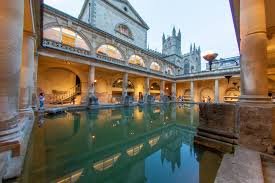
Roman Baths are incredibly well-preserved indications of Roman bathing and social culture, situated in the city of Bath. The city of Bath itself is a UNESCO World Heritage Site, and these historic baths date back to the 1st century AD, with the Romans having built the complex around the natural hot springs used for thousands of years.
It was also divided into four main parts: the Sacred Spring, the Roman Bath House, the Temple of Sulis Minerva, and the museum. These Roman baths really give quite an insight into how the Romans would bathe—they thought that these hot springs cured diseases and healed injuries. Beautifully preserved stone structures greet visitors, who are still able to view the great bath where waters remain, although they are no longer safe to bathe in.
Other than the baths themselves, the city of Bath has Georgian architecture, such as the famous Royal Crescent, making the city a destination combining both Roman and Georgian cultural influences.
The Roman Baths are one interesting exploration back to ancient life during Roman times. If it has to be watched by historians going to southwest England, well—just a visit.
6. Westminster Abbey, London
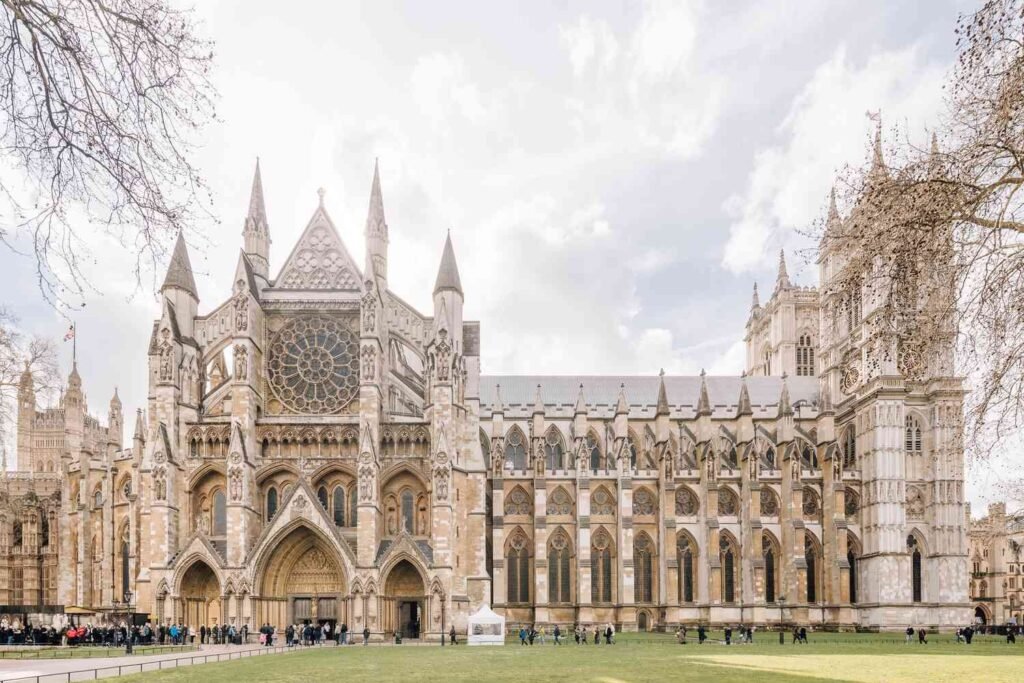
Westminster Abbey perhaps is the most iconic religious building in the United Kingdom, renowned for its beautiful architecture and its central role in British history. Standing at the very heart of London, it has been the site of every English, and later British, coronation since 1066, hence being considered a symbol of the nation’s monarchy.
In addition to being a coronation site, Westminster Abbey is the burial place of several of the UK’s most famous historical figures, from monarchs and poets to scientists and statesmen. The tombs of Sir Isaac Newton, Charles Darwin, and Geoffrey Chaucer are among the most well-known.
The Abbey offers a beauteous structure with Gothic design, and together with its rich historical significance, it basically forms an ideal constituent of London’s historical tour program. The same is the locale where the spiritual and political events of the UK converge, and with this, further development has emerged as a center of British culture and national life.
7. Durham Cathedral, Durham
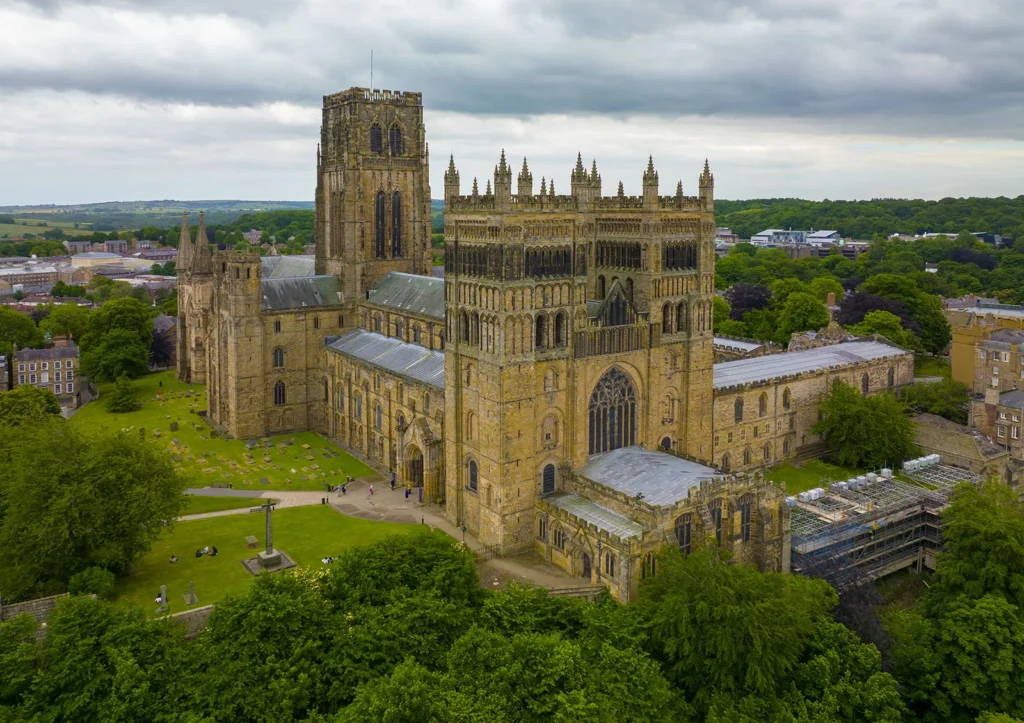
Durham Cathedral generally is considered the most perfect European example of Norman architecture. This glorious cathedral stands in a dramatic style atop a peninsula surrounded on three sides by the River Wear. It amalgamates Romanesque style with graceful interior decoration. Built between the years 1093 and 1133, Durham Cathedral was built to shelter the relics of Saint Cuthbert, a highly respected saint throughout northern England.
The most striking feature of the cathedral is its Norman vaulted ceiling, which is one of the largest in Europe. The cloisters are equally impressive and form a very quiet, secluded oasis away from the grandeur of the building itself. Durham Cathedral was a very important place in the medieval church and remains a place of worship and pilgrimage today.
The mighty Durham Cathedral represents one of the finest works from the Norman era and an architectural miracle that simply should not be missed for any lover of medieval architecture and history going up north in England.
8. University of Oxford, Oxford
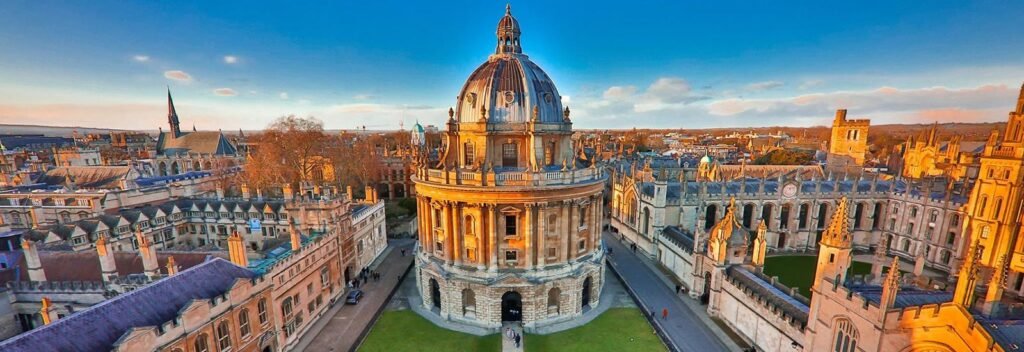
Oxford University has, since time out of mind, been the oldest institution of higher learning in the Anglophone world and served as a repository for all things quintessentially British. Oxford, established during the 12th century, has provided education to many of the most influential figures throughout history, such as many British prime ministers, writers, scientists, and philosophers.
With literally so many colleges comprising this university, it’s not possible to tour all of them; however, a few of the most well-known universities include Christ Church and Magdalen College, all with historic tours to explore buildings, tranquil courts, and some very iconic libraries. The Bodleian is one of Europe’s oldest libraries with several million volumes of books and manuscripts, where the works of William Shakespeare and J.R.R. Tolkien were created.
The city of Oxford itself is a fine combination of ancient architecture and modern academia, and for that, it is well worth visiting for those interested in British intellectual and cultural history.
9. Windsor Castle, Windsor
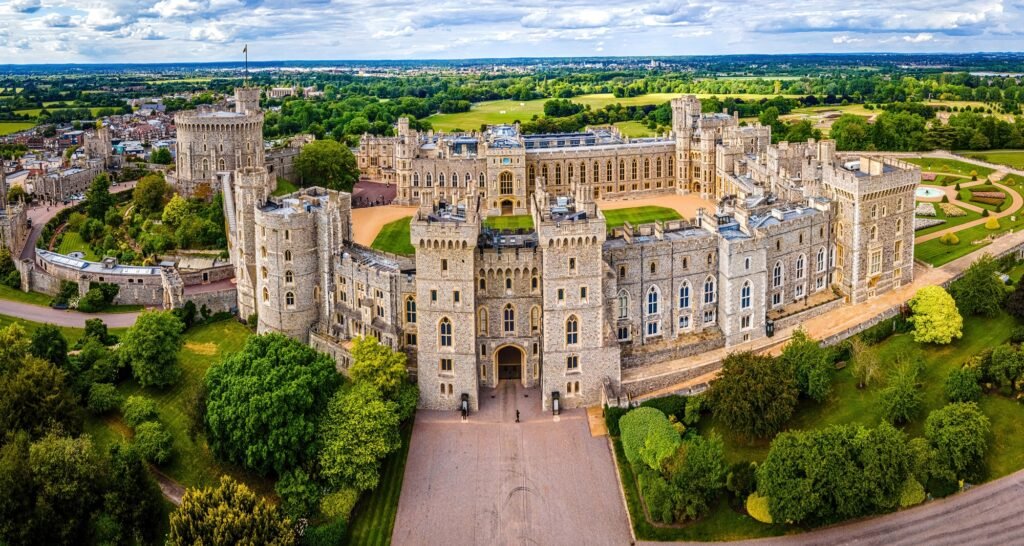
This makes Windsor Castle the oldest and largest occupied palace in the entire world; it has remained a residence for the British monarchy for more than a millennium. Tucked away within this quintessential country town, Queen Elizabeth II dwells there. The iconic place bears enough evidence to talk of the relentless glory of one of the most ancient monarchs’ power—United Kingdom of England. Visitors to Windsor Castle take a tour through the opulently furnished State Apartments, hosting the royal functions, St. George’s Chapel, which has been used for many a royal wedding, including that of Prince Harry to Meghan Markle in 2018, and the equally impressive grounds and gardens of the castle—a sense of what the royal lifestyle is and has been for centuries. Windsor Castle is the very center of British royal history and culture that allows one to peek at customs, ceremonies, and life at large in the British monarchy.
Conclusion
The UK holds innumerable monuments of various repute, oozing an ever-occurring yet vastly diversified cultural heritage. From the mysterious prehistoric structure of Stonehenge to medieval magnificence at Edinburgh Castle and the academic reputation of Oxford University, the UK offers a wealth of history for visitors to marvel at. Each site has its own story to tell, contributing to the wider story of the country’s development from ancient times right through to the modern day. Whether you are a history enthusiast or simply someone who enjoys exploring the past, the historical sites across the UK are an essential part of any journey through the country.
